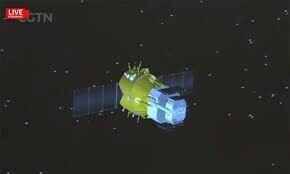ISLAMABAD: According to the Institute of Space Technology, Pakistan’s first lunar satellite, ICUBE-Q, successfully entered the moon’s orbit on Wednesday afternoon, marking an important milestone.
On May 8, at 1:14 p.m., ICUBE-Qamar was successfully launched into lunar orbit.
The Institute of Space Technology claims that this significant breakthrough underscores how important it may be in opening doors for Pakistan to pursue larger-scale space missions in the future.
“After deployment, the satellite is operating in accordance with the design parameters. The health data for every subsystem is great. The imaging payload is operational,” IST stated, going on to say that extensive in-orbit testing will take place over the course of the next two days. Images will be made public following testing in orbit.
Pakistan launched the sixth nation’s first-ever moon satellite last Friday.
The ICUBE-Q satellite, which was launched by the Chinese rocket Chang’e 6 lunar mission, signified a historic partnership in lunar exploration between China and Pakistan. The Chinese mission’s goal was to land on the far side of the moon, where it would remain hidden from Earth for all time, then gather and bring back samples.
The Chinese embassy conveyed their excitement for the achievement, emphasizing that it was the first time China and Pakistan had worked together on lunar exploration.
The dean of the institute’s department of electrical and computer science, Dr. Khurram Khursheed, stated that the satellite would be essential to deep space missions.
With a 7kg, one-megapixel camera designed for missions with limited power, the satellite can operate in extremely cold temperatures—down to minus 100 degrees Celsius. With its ability to send photos at a modest 1-kbps, its surface-level analytic skills will be able to deliver vital information on the locations of craters, water, and ice traces on the moon’s surface. These results, which were acquired via a variety of methods, have potential for widespread application, he stated.
ICUBE-Q will orbit the moon for three to six months, taking pictures and sending them back to Earth while the Chinese lander gathers samples of rock and soil. Pakistan expects to share satellite-captured images by May 15, the institute says.








